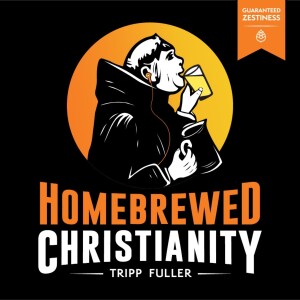
Dr. Ryan Burge is back on the podcast with his most popular charts of data on religion. The graphs we discuss are the 5 most popular he shared over the last year on his nerdy twitter.
Ryan P. Burge is an assistant professor of political science at Eastern Illinois University. Author of
numerous journal articles, he is the co-founder of and a frequent contributor to Religion in Public, a forum for scholars of religion and politics to make their work accessible to a general audience. Burge is a pastor in the American Baptist Church.
Previous Visits from Ryan Burge
- Evangelical Jews, Educated Church-Goers, & other bits of dizzying data
- 5 Religion Graphs w/ a side of Hot Takes
- Myths about Religion & Politics
In 1991, 87% of people aged 18-35 years old were Christians. 8% of them identified as religiously unaffiliated.
By 1998, 73% of young people were Christians (a 14 point drop) and 21% of young people identified as nones (a 13 pt. increase).
America lost its religion in 1990s. pic.twitter.com/oPL2UYzswY
— Ryan Burge ? (@ryanburge) April 4, 2022
The drop in fertility over the last decade is primarily among Democrats.
Peak parenting in 2010:
65% of Republicans in their late 30s were parents.
62% of Democrat
Peak parenting in 2020:
60% of Republicans in their late 30s were parents.
50% of Democrat pic.twitter.com/m3HmjaT1Up
— Ryan Burge ? (@ryanburge) November 28, 2022
Do people become more conservative as they age? This data tells a nuanced story.
For those born between 1930 and 1949, they did move rightward between 2008 and 2021.
1950-1964 saw no change at all.
Those born in 1965 or later have moved to the left between 2008 and 2021. pic.twitter.com/WqpGXy3T43
— Ryan Burge ? (@ryanburge) April 20, 2022
In 1988, 6% of white Democrats took an atheist or agnostic position about God. It was 3% of nonwhite Democrats.
In 2021, 32% of white Democrats were atheist/agnostic. It was 8% of nonwhite Democrats.
There’s never really been a racial God Gap for Republicans.
More Episodes
 2022-09-22
2022-09-22
 2022-09-20
2022-09-20
 2022-09-19
2022-09-19
 2022-09-12
2022-09-12
 2022-09-06
2022-09-06
 2022-08-30
2022-08-30
 2022-08-15
2022-08-15
 2022-08-11
2022-08-11
 2022-08-01
2022-08-01
 2022-07-28
2022-07-28
Create your
podcast in
minutes
- Full-featured podcast site
- Unlimited storage and bandwidth
- Comprehensive podcast stats
- Distribute to Apple Podcasts, Spotify, and more
- Make money with your podcast
It is Free
- Privacy Policy
- Cookie Policy
- Terms of Use
- Consent Preferences
- Copyright © 2015-2024 Podbean.com




